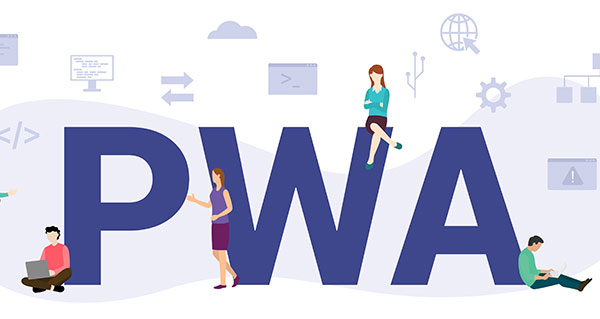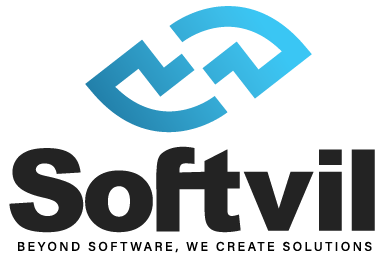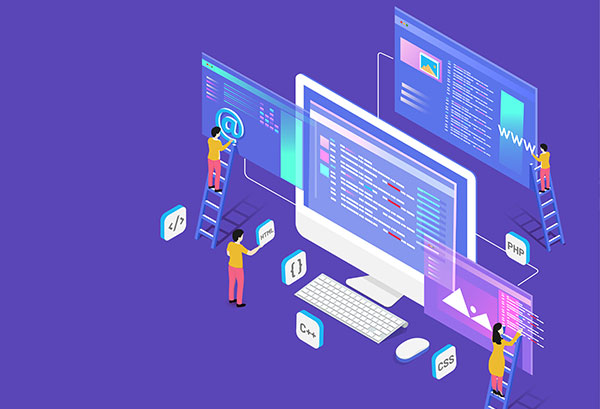Progressive web applications (PWAs) have emerged as a revolutionary force in the world of software development, bridging the gap between traditional web and native mobile applications. With their ability to deliver fast, reliable, and engaging user experiences, PWAs have witnessed a remarkable rise in popularity and adoption in recent years. Offering the best of both worlds, PWAs combine the accessibility of web applications with the performance and functionality of native apps, reshaping the way we interact with the web. In this article, we delve into the phenomenon of progressive web application development and its transformative impact on the web experience. We explore the advantages of PWAs over traditional apps, including improved performance, seamless cross-platform compatibility, and reduced development costs. By examining real-world success stories from various industries, we witness firsthand how PWAs have elevated user engagement and driven business growth.
The Need for PWAs: Filling the Gap between Web and Native Apps

Limitations of traditional web and native mobile applications
Traditional web applications often face limitations that hinder user experience. They rely heavily on network connectivity, resulting in slower loading times and potential disruptions in areas with poor connectivity. Additionally, web apps have limited access to device features, making it challenging to provide a native-like experience. Native mobile applications, while offering excellent performance and access to device capabilities, come with their own drawbacks. Developing separate versions for different platforms (iOS, Android) can be time-consuming and costly. Moreover, users are required to download and install native apps, which may deter them from engaging with new applications.
Exploring the demand for a solution that combines the best of both worlds
There is a growing demand for a solution that combines the strengths of web and native apps. Users seek a seamless and accessible experience that encompasses the speed, responsiveness, and offline capabilities of native apps, without the need for installation. They desire applications that can be easily discovered, accessed across multiple devices, and utilize device features such as push notifications, camera, and geolocation. This demand arises from users’ desire for convenience, immediate access, and enhanced engagement. Businesses also recognize the importance of delivering exceptional user experiences to stay competitive in the digital landscape. As a result, progressive web applications (PWAs) have gained prominence as a solution that fills the gap between traditional web and native apps. PWAs offer the benefits of both worlds, combining the reach and accessibility of web apps with the performance and functionality of native apps.
The Advantages of PWAs

Progressive web applications (PWAs) offer several advantages that make them a compelling choice over traditional web and native apps. This subsection provides an overview of these benefits, highlighting how PWAs are revolutionizing the app development landscape.
Improved user experience, performance, and engagement
PWAs provide a superior user experience by leveraging modern web technologies. They offer fast loading times, even on slower networks, thanks to caching and service workers. With an app-like interface, PWAs deliver a seamless and immersive experience, ensuring users stay engaged. PWAs also support offline functionality, allowing users to access content and perform actions without an internet connection.
Lower development and maintenance costs
Developing PWAs can be more cost-effective compared to building separate native apps for different platforms. With PWAs, developers can create a single codebase that runs on multiple platforms, eliminating the need for platform-specific development. This unified approach streamlines development efforts and reduces maintenance complexities, resulting in cost savings for businesses.
Cross-platform compatibility and accessibility
PWAs are designed to be cross-platform compatible, accessible via modern web browsers on various devices, including smartphones, tablets, and desktops. This compatibility eliminates the need for users to download and install separate apps, making PWAs easily accessible and discoverable. The ability to reach a wider audience across multiple platforms enhances the potential for user engagement and business growth.
Technology Advancements Enabling PWA Development

The rise of progressive web applications (PWAs) can be attributed to several technological advancements that have enabled their development and enhanced their capabilities. This subsection explores the key advancements that have played a crucial role in the proliferation of PWAs.
Introduction of Service Workers, Web App Manifest, and other key technologies
Service Workers, a fundamental technology behind PWAs, allow developers to create offline experiences and provide background processing capabilities. These JavaScript workers intercept network requests, cache data, and enable offline functionality, ensuring that PWAs remain functional even in the absence of an internet connection. Web App Manifest is another essential technology that enables PWAs to be installed on users’ devices. It provides a manifest file containing metadata, including the app’s name, icons, and preferred display mode, allowing users to add the PWA to their home screens and access it as a standalone app-like experience. Additionally, other key technologies like IndexedDB and Web Push API have contributed to the rise of PWAs. IndexedDB provides a client-side database for storing substantial amounts of data offline, enabling seamless offline experiences. The Web Push API allows PWAs to send push notifications to users, engaging and re-engaging them even when they are not actively using the application.
Enhanced browser support and performance capabilities
Browser support for PWA technologies has significantly improved in recent years. Modern browsers now provide robust support for Service Workers, Web App Manifest, and other PWA-specific APIs, ensuring a consistent and reliable experience across different platforms. Furthermore, advancements in browser performance have contributed to the rise of PWAs. Modern browsers leverage technologies like JavaScript optimization, efficient rendering engines, and improved caching mechanisms to enhance PWA performance. This enables PWAs to deliver fast loading times, smooth animations, and responsive user interfaces, rivaling the performance of native applications.
Overcoming Challenges: Addressing Misconceptions about PWAs

Despite the numerous advantages and growing popularity of progressive web applications (PWAs), there are still misconceptions and concerns that need to be addressed. This section focuses on debunking common misconceptions and addressing key challenges associated with PWAs. One common misconception is the limited discoverability of PWAs. Contrary to belief, PWAs can be easily discovered through search engines, social media platforms, and direct links. Additionally, they can leverage web app manifests and service worker-based caching to provide app-like experiences, even when users are offline.
Another concern is the misconception that PWAs lack offline capabilities. In reality, PWAs utilize service workers and caching mechanisms to store and retrieve data, enabling offline access to content and features. Users can continue to interact with PWAs and access previously loaded information, providing a seamless experience even without an internet connection. Lastly, there is a misconception that PWAs have limited access to device features. However, PWAs can utilize APIs such as geolocation, camera, push notifications, and more, providing access to a wide range of device capabilities. With modern browser support, PWAs can offer native-like experiences and tap into the functionalities that were once exclusive to native apps.
By addressing these misconceptions and concerns, it becomes clear that PWAs offer a robust solution that bridges the gap between web and native apps. They provide discoverability, offline capabilities, and access to device features, making them a versatile and powerful choice for delivering engaging and reliable user experiences.
PWA Development Best Practices

Developing PWAs requires adhering to best practices that prioritize responsive design, a mobile-first approach, performance optimization, and the implementation of caching and offline functionality. By following these practices, developers can create PWAs that deliver exceptional user experiences across devices, load quickly, and provide offline access to content, ultimately elevating the overall PWA experience.
Responsive design and mobile-first approach
Developing progressive web applications (PWAs) requires a strong emphasis on responsive design and adopting a mobile-first approach. This entails designing and optimizing the PWA to provide an optimal user experience across various devices and screen sizes. By prioritizing the mobile experience, developers ensure that the PWA is accessible and user-friendly on smartphones and tablets.
Optimizing performance and load times
To deliver a smooth and fast user experience, optimizing performance and load times is crucial. Minimizing the PWA’s file sizes, reducing the number of HTTP requests, and leveraging techniques like lazy loading and code splitting can significantly enhance performance. Employing efficient JavaScript and CSS frameworks, as well as optimizing images and other media, further contribute to improved load times.
Implementing caching and offline functionality
Caching and offline functionality are essential aspects of PWAs. Implementing a service worker, which acts as a network proxy, allows the PWA to cache assets and content. By caching critical resources, the PWA can provide offline access to previously loaded content, ensuring a seamless user experience even when the internet connection is unreliable or unavailable. Implementing strategies like background syncing and dynamic caching further enhance offline functionality.
Conclusion
Progressive web applications (PWAs) have experienced a remarkable rise in popularity and have emerged as a transformative solution for enhancing the web experience. By combining the best of web and native apps, PWAs offer improved performance, cross-platform compatibility, and reduced development costs. They address the limitations of traditional apps and provide features like offline functionality, push notifications, and seamless user experiences. With advancements in technology and browser support, PWAs have become a viable option for businesses and developers seeking to deliver fast, engaging, and accessible applications. Embracing PWAs unlocks their transformative potential, empowering businesses to reach a wider audience, enhance user engagement, and stay competitive in the ever-evolving digital landscape. The future of app development lies in the adoption of PWAs, and businesses and developers are encouraged to seize this opportunity to enhance the web experience for their users.

